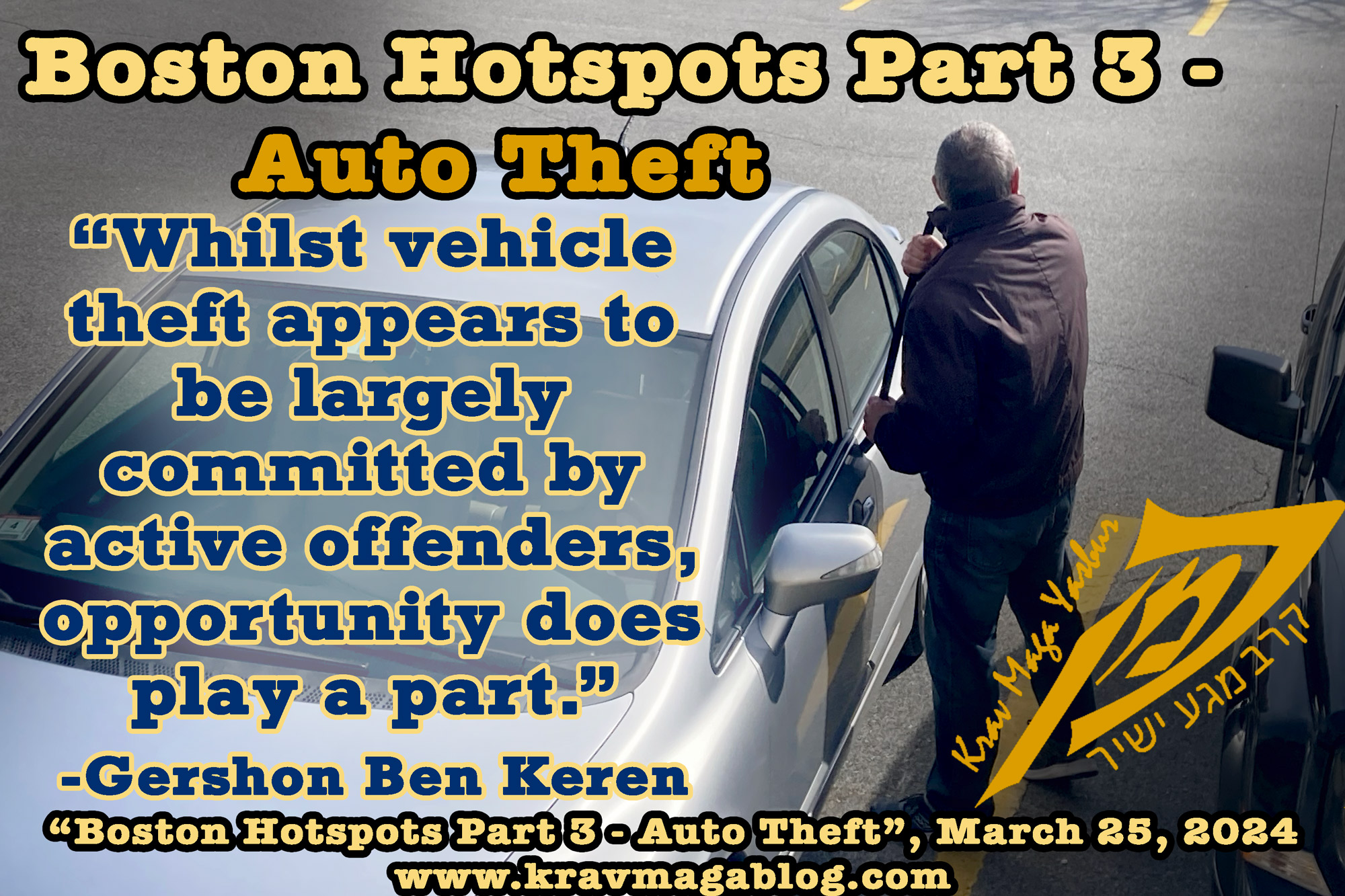Returning To The Scene Of The Crime, is an article written by Gershon Ben Keren, a 5th Degree Black Belt in Krav Maga, who teaches Krav Maga in Boston, MA. He has also authored three Amazon best-Selling Books on Krav Maga.
I personally believe there are a lot of dangers and pitfalls that come about from knife disarming. One being that in reality it is a lot harder than it looks, or may have been experienced in training. Many Krav Maga instructors will tell you that once you have softened your attacker up with punches etc. disarming becomes quite straightforward. Unfortunately this is a common Krav Maga misconception; once you stop striking, unless you have battered the person into unconsciousness – which is also hard to do - their focus quickly returns to the knife, especially when they feel your other hand move to theirs. Attackers will do everything they can to hold on to their weapon, because they know that once they give it up, in all likelihood it will be used against them; and in all likelihood it will, as the fight doesn’t simply stop because you are now holding the knife. If your assailant comes towards you when you are holding it, you will use it and you would be foolish not to. Because of this I generally advocate, using an assailant’s knife against them whilst they are still holding it – in such a way that your finger prints are not on the knife. This raised some questions in a class at my school, and they were good ones, and worth looking at.
I believe that being successful when dealing with violence, is largely down to being decisive. It doesn’t matter what you know, and how good you are, if you are hesitant. Because of this I put a lot of stock in having pre-planned decision trees, and heuristics (simple rules of thumb), that can be applied when dealing with aggressors, so that decisions can be reached quickly, and acted upon immediately. One of my simple decision trees, is that, “if somebody wants something from me they can have it, if somebody wants me I fight.” So if a mugger wants my wallet, they can have it, if an abductor wants me to move then I fight. However in saying that if a mugger doesn’t exit the situation after I have acquiesced to their demand, then I need to fight. The question raised was in relation to this: if after you have handed over your wallet your aggressor stays, and you end up stabbing them with their own knife (not leaving your fingerprints on the knife), should you retrieve your wallet? One of the thoughts behind the question was that since your fingerprints aren’t on the knife (due to the control position you were in), if you retrieve the wallet, with your bank cards and ID in it, there is nothing to tie you to the scene. The other thought was that now you have stabbed your assailant, because they have your driving license or similar, they will be able to find your house, and seek their revenge.
The first thing to note about avoiding getting your fingerprints on the knife, is that you are not trying to avoid detection, but rather clearly illustrate who the aggressor in the situation was. It would be naïve to think that in the days of CCTV Cameras (Closed Circuit TV Cameras), and passers-by with cell phones that you would always be able to avoid being spotted or identified. Not having your fingerprints on the blade is more about clearly identifying who the aggressor in the situation was; if you disarm somebody and then stab them, it might be harder to make the case that you didn’t have serious harmful or lethal intent towards your attacker. In reality not having your fingerprints on the knife is a “benefit” of the technique, not the focal point of it.
It is also important to be able to tell the story (in reality have your attorney tell the story) of what happened. If you can demonstrate that you acquiesced to the mugger’s demand for your wallet, and only then tried to control the knife, when they didn’t disengage, you have a reasonable reason for using force against them. If after cutting them you try and take your wallet back, your actions look much more malicious, and could always be interpreted in a different way e.g. you handed your wallet over, were overtaken with rage, and decided to teach them a lesson before taking it back. If the wallet stays with them, it is much more believable that any actions you took were only in regard to your personal safety, and were in no way related to your wallet.
From a personal safety perspective it is far better to exit a dangerous situation quickly, rather than take the time to find your wallet. In those moments you waste, a third party who was working with your assailant, may have managed to get to you, and/or your assailant may have recovered enough to continue the fight. If you were prepared to hand your wallet over in the first place, don’t risk your safety by trying to retrieve it.
Many people have a fear that if they hand over their wallet to a mugger, and it contains their driving license, the mugger will now know where they live. In reality, muggers have chosen their particular crime to get instant cash, they are not by default burglars (who will target a house based on the ease with which they can break in, get the items they want and get away), and there is nothing about the address on your license per se, which gives them this information. By the same token a mugger is not by default a rapist, who will want to gain access to you at your address. Most muggers will discard everything but the cash, as driving licenses and credit cards, implicate them in any crimes they have committed. It is true that a mugger may try and seek revenge for whatever pain and injury you have caused them but most likely they will take out their vengeance on their next victim, rather than take the effort to track you down at your house. That would take a fair degree of time and effort, for somebody who has chosen one of the laziest types of crime, and is more interested in supporting their drug habit.
A simple solution though is to separate the cards etc. that are in your wallet. Take your driving license and a credit card out wrap, two $20 bills round them with an elastic band, and keep this slim profile object in another pocket. This way when you hand your wallet over you keep hold of your ID, and have a credit card you can use, whilst your stolen ones are being replaced. Plus, if you need $40 for taxi fare or public transport in order to get home, you have cash to do that.
By handing over your wallet, you are giving your assailant a choice: leave and you won’t harm them, stay and you will. This is not a passive act, it is one of taking control. If they stay then you will use their weapon against them, rather than disarming, and if you cause them serious injury, so be it – you had every reason to believe that they were going to harm you, because they didn’t leave after you acquiesced to their demand. Don’t return for your wallet, but inform the authorities of what happened, and let your attorney, not you construct/tell the story.
0 COMMENTS














